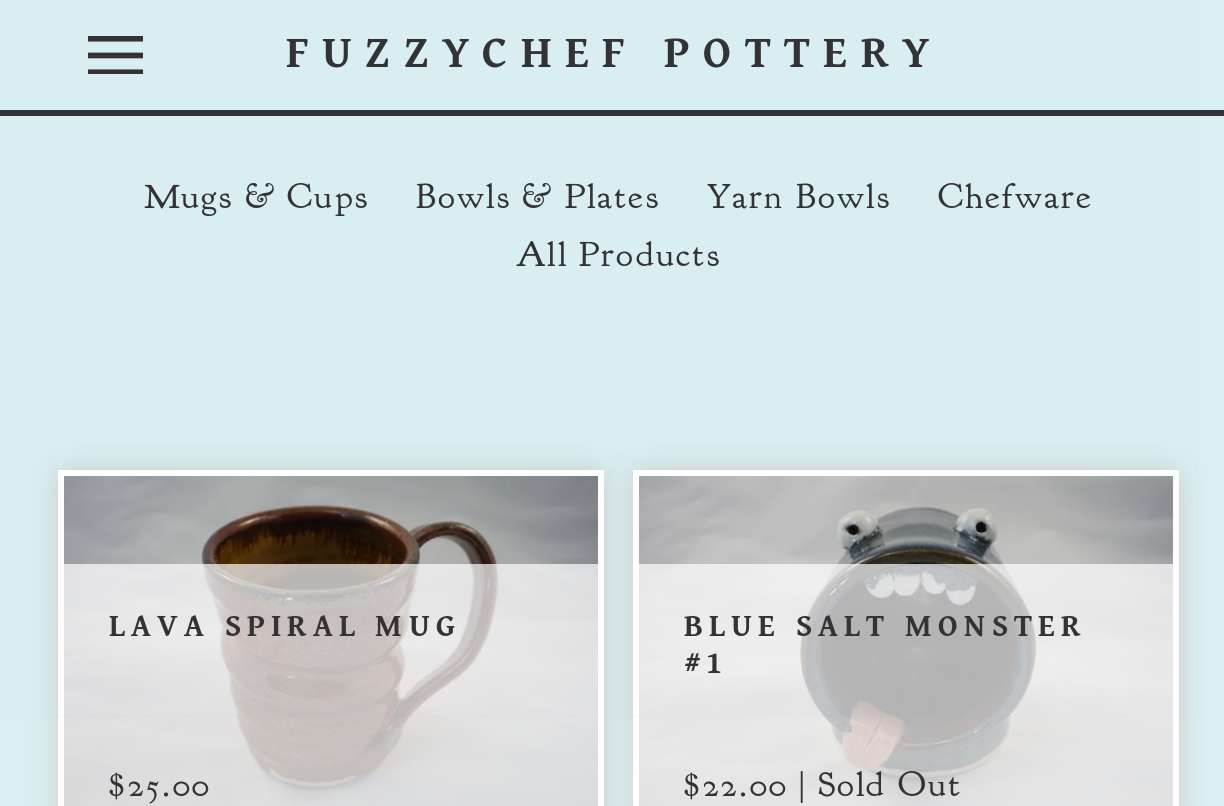getting your pottery online part 1

So you've decided that, due to the virus or otherwise, you want to get an online presence for your pottery studio. This series will outline the steps you need to take and the decisions you need to make in order to make your ceramics web presence a reality. Since it assumes that you are starting with no prior knowledge of the web or available services, folks with a little knowledge may want to skip ahead to the review of online store hosts.
We will cover:
- Choosing Your Online Presence
- Domains
- The Social Media & Shared Market Alternative
- Business Card Sites
- Etsy and Its Competitors
- Online Store Builders & Conclusion
This series will not cover online advertising, SEO, photographing your work, how to use social media, or how to put video online.
Part 1: Choosing Your Online Presence
We're going to start with the hardest part: deciding what kind of online presence you want to have. There's three basic levels of internet involvement for a ceramic artist, with escalating levels of online activity as well as requirements from you to make a site happen and to maintain it.
Business-Card Site: the appropriate level for many artists, the Business Card Site (hereafter "Bcard") just presents a few static photos and contact information for your studio. People find your site, then phone you, although a lot fewer of them than would patronize an actual online store. This is the appropriate level for you if you're not able, or willing, to spend significant amounts of time online, and is by far the cheapest. It only requires you to update your site once every few months, and costs between nothing and $35/year.
Online Store: Given lockdown, though, many artists want to sell their pottery online, which means escalating to the "Online Store" level. While there are a range of options here, from 3rd party marketplaces like Etsy to building custom ecommerce portals, all of them cost money, either as a percentage of your sales or a monthly fee of $10 to $50 a month. You also need to be prepared to upload and maintain an online inventory of your work, respond to messages from your online store quickly, and ship purchases promptly when an order is completed.
Full Web Promotion: Some artists have decided to use the web as their primary means of reaching the public. As well as an online store, this generally includes artist statements, a blog, videos, maybe even a virtual studio tour. While this level is too much for most potters, it's appropriate if you want to teach pottery online. In addition to a tremendous amount of your time, and hosting costs between $30 and $150 a month, this level will generally also involve hiring a web consultant to assist you in design and functionality. Since this level is never appropriate for your first web site, I'm only mentioning it here because you may want to plan to eventually "grow into it."
You need to decide what you want to do with your online artist presence, what you hope to accomplish, and importantly, what you're capable of doing to get it. Since most readers are deciding between a BCard site and an Online Store, here's five questions to help determine where you are:
- Do you want to sell pottery online?
- Can you create an inventory of your work, including attractive photographs and measurements?
- Does spending between $100 and $300 a year on web hosting and support make sense for you?
- Are you prepared to respond to online messages almost every day?
- Can you box and ship orders within a week of receiving them, and do you have experience shipping your artwork?
If all of the above questions are "yes," you're ready for an Online Store. If all or most of them are "no" then you should think about a Bcard site. If it's a mix, then you might think about one of the low-commitment shared site options I will outline in Part 3.
Once you've made your initial decision, it's time to move on to Part 2: Getting Your Domain.